.jpg)
A |
|
Giotto, Madonna Enthroned, c. 1310, tempera and gold leaf on wood-Madonna is depicted as strong and unshakeable compared to Cimabue's enthroned Madonna. She is shown as weighted and queenly in this painting, marked the end of medieval painting and beginning of a naturalistic approach. |
| |
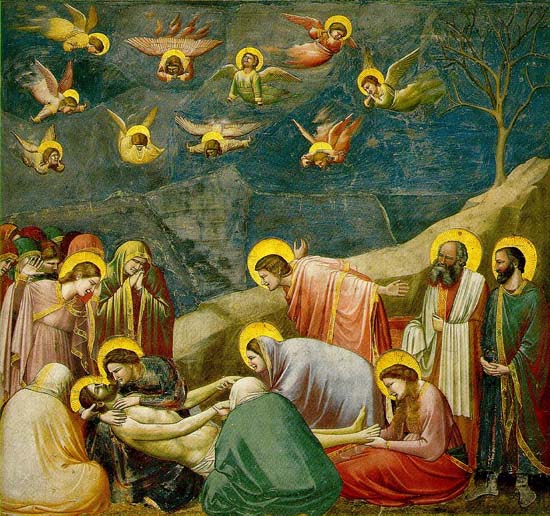
B |
|
Giotto, Lamentation, c. 1305, fresco, Arena Chapel, northern Italy |
| |
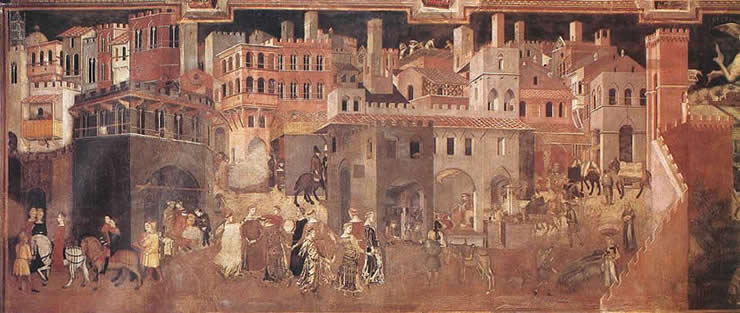
C |
|
Ambrogio Lorenzetti, Effects of Good Government in the City and County, 1339, fresco, city hall of Siena, Italy-Painting is a panoramic view of the city of Siena, and the effects good government can have. A bustling city and a secure country side is for those who operate under the law. |
| |

D |
|
Jan Van Eyck, Arnolfini and Bride, 1434, oil on wood-Depicted Arnolfini, a financier, and his betrothed, taking marriage vows, with almost all objects in the bedroom conveying the sanctity of the event. The clogs show that it is taking place on holy ground, the dog symbolizes fidelity, the curtains of the marriage bed are open, a statue of the saint of childbirth is over the bed, a whisk broom symbolizes domestic care, oranges = fertility, candle and mirror=all seeing eyes of God, each object is exquisitely painted, and in the mirror the artist and another figure is seen. |
| |
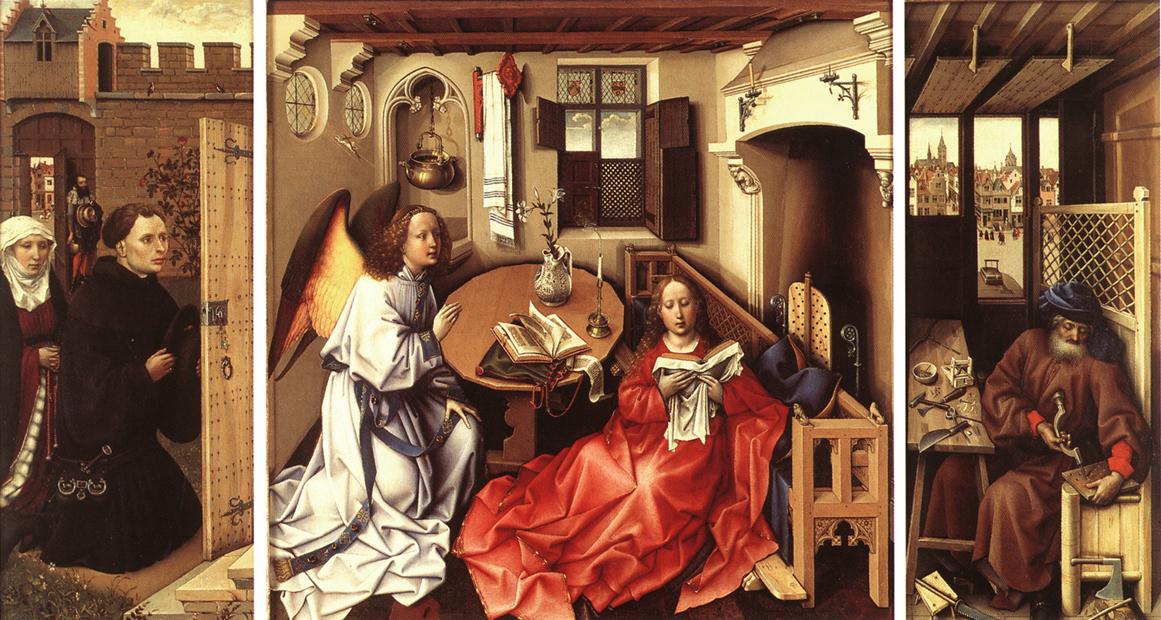
E |
|
Robert Campin, Merode altarpiece, c. 1425, oil on wood-Annunciation theme is the central panel, Gabriel approaches Mary, The objects in the room represent the the Virgin's purity, the right panel shows Joseph making a mousetrap, symbolizing Christ is bait to trap the Devil, the left side closed garden depicts Mary's purity, and the flowers relate to her purity. |
| |

F |
|
Rogier Van Der Weyden, Deposition, ca. 1435. Oil on wood-The shallow depth of the painting imitates the shallow shrines popular in the 15th century, the painting has a strong emotional impact. It resembles a relief carving |
| |
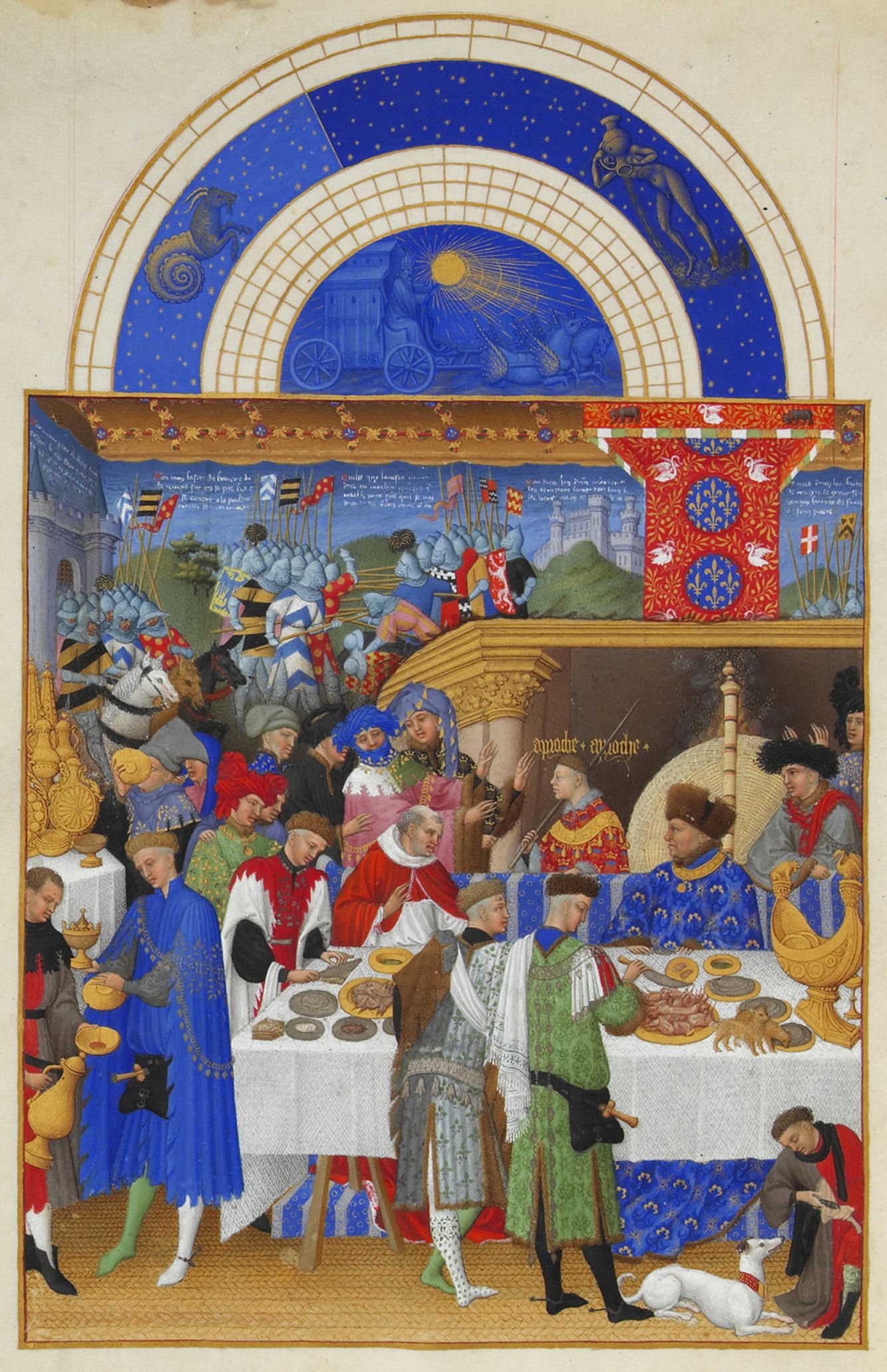
G |
|
Limbourg brothers, The Very sumptuous Hours of the Duke of Berry, 1413-16, ink on vellum-A calendar representing 12 months of associated seasonal tasks, alternating between nobility and peasantry, January's depicts a New Year's celebration, while October's focuses on peasantry, shows a sower and harrower in front of the Louvre. |
| |

H |
|
Donatello, David, c. 1450, bronze-Part of the Renaissance revival of classic principles, nude sculptures, the clergy didn't accept nudity in art and only rarely appeared. Reflected the sculptural styles similar to how Gods were depicted. |
| |

I |
|
Masaccio, Tirbute Money, c. 1425, fresco, Florence, Italy-Source of light comes from outside the picture, the placement of the figures is unique, in a large landscape, with everyone in a circle around Christ. |
| |

J |
|
Masaccio, Holy Trinity, c. 1425, fresco, Florence, Italy-Shows the application of mathematics to the perception of space, demonstrated new space and perspective principles. |
| |

K |
|
Sandro Botticelli, Primavera, c. 1482, tempra on wood-Celebrates love in the spring, Venus and Cupid at the center of the composition, probably commissioned to commemorate the wedding of Lorenzo |
| |

L |
|
Michelangelo, Sistine Chapel frescoes, 1508-12, Vatican |
| |

M |
|
Leonardo, Madonna on the Rocks, c. 1485, oil on wood-Used understandings of painting light and dark to express emotion. Used gestures and a pyramidal composition to unite the Virgin, John the Baptist, and Christ |
| |

N |
|
Leonardo, Last Supper, c. 1495, fresco and oil on tempra on plaster, Milan, Italy-Christ, being the focal point of the painting, announces that one of his disciples will betray him and they react. |
| |

O |
|
Raphael, School of Athens, 1509-11, fresco, Stanza della Segnatura, Vatican Palace-A gathering of the great philosophers and scientists, each with an expression reflecting their views on the world. Great achievement in perspective for this painting. |
| |

P |
|
Michelangelo, Pieta, c. 1500, marble, St. Peter's Vatican-Mary cradling the dead body of Christ in her lap, popular for French and German artists. Amazing texture in flesh and fabric, captures sadness and beauty of the Virgin, but controversial because she looks younger than her son. |
| |

Q |
|
Michelangelo, David, 1501-4, marble-Represented in classical nudity, represented before he battled with Goliath, his body showing the power he has and what is to come of the battle. |
| |
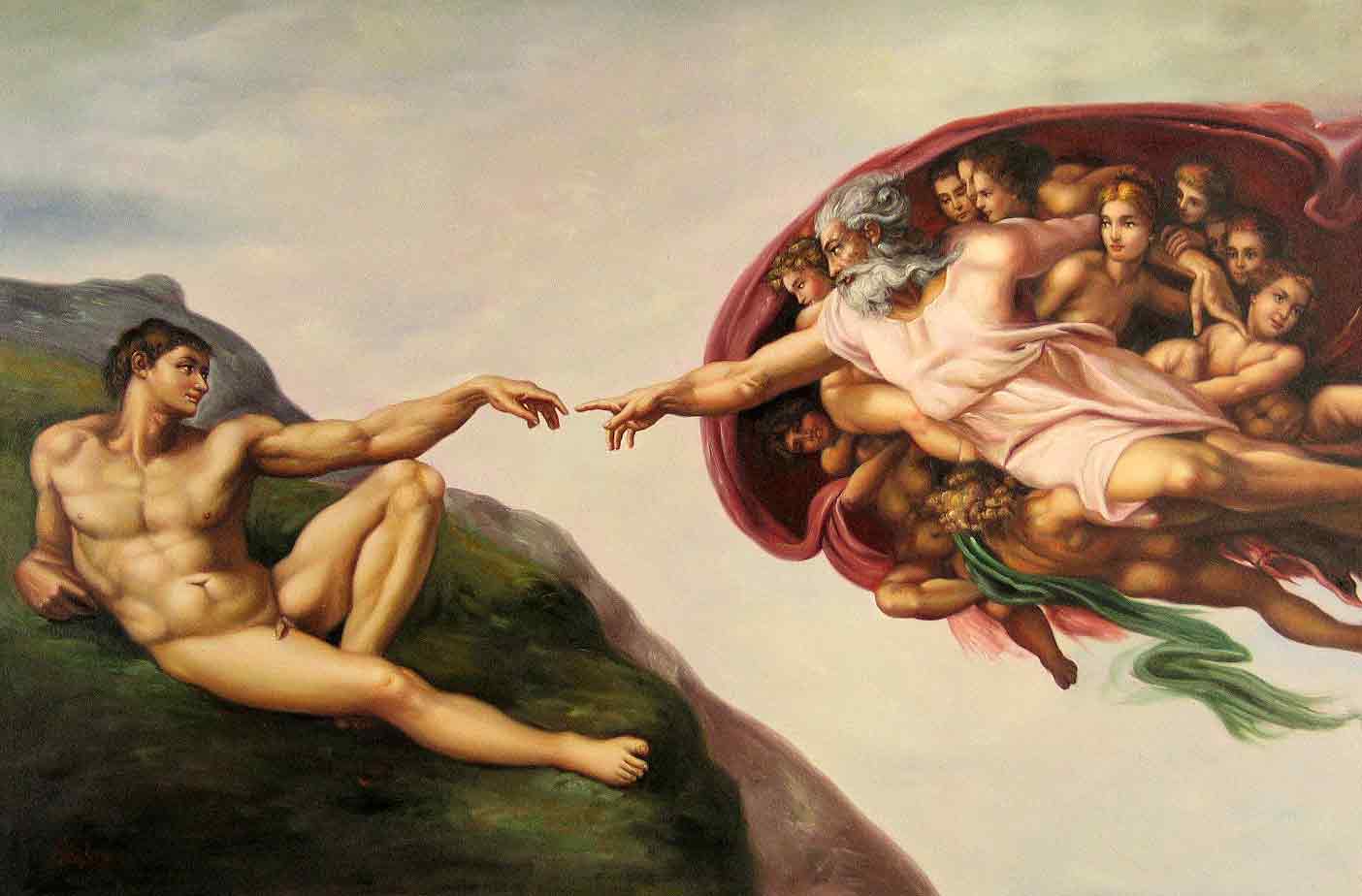
R |
|
Michelangelo, Creation of Adam, 1511-12, fresco, Sistine Chapel ceiling-One of the panels of the Sistine Chapel, God confronts Adam while he is still a heavy material part of Earth and gives him life, pictured is also possibly the Virgin Mary and baby jesus, Adam's arm points to him. |
| |
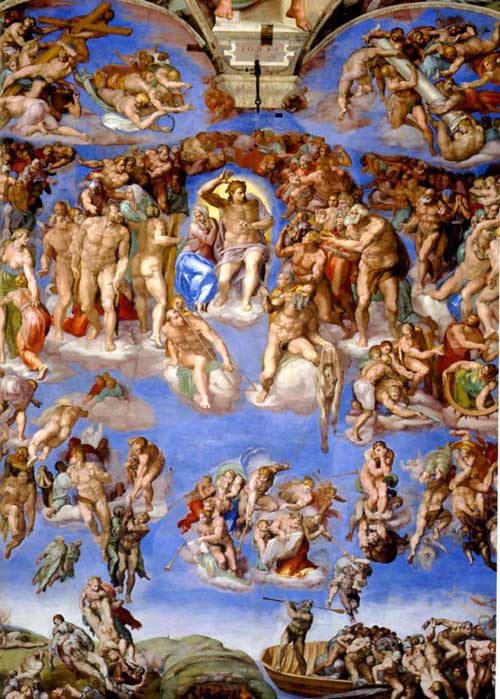
S |
|
Michelangelo, Last Judgment, 1536-41, fresco, Sistine Chapel, Vatican-Depicted Christ as the stern judge of the world, a vision of the terrifying fate that awaits sinners, he shows himself, flayed skin, but there is hope, the saved souls crowd around him. |
| |

T |
|
Giorgione, The Tempest, c.1510, oil on canvas-No known narrative, subject is unknown, lush landscape with a stormy sky. |
| |

U |
|
Titan, Madonna of the Pesaro Family, 1519-1526, oil on canvas, Venice, Italy-Madonna off center, new style of dynamic composition. |
| |

V |
|
Titan, Venus of Urbino, 1538, oil on canvas-Developed new standards for painting the female nude, established oil based pigments on canvas as the preferred panting medium in western art. |
| |
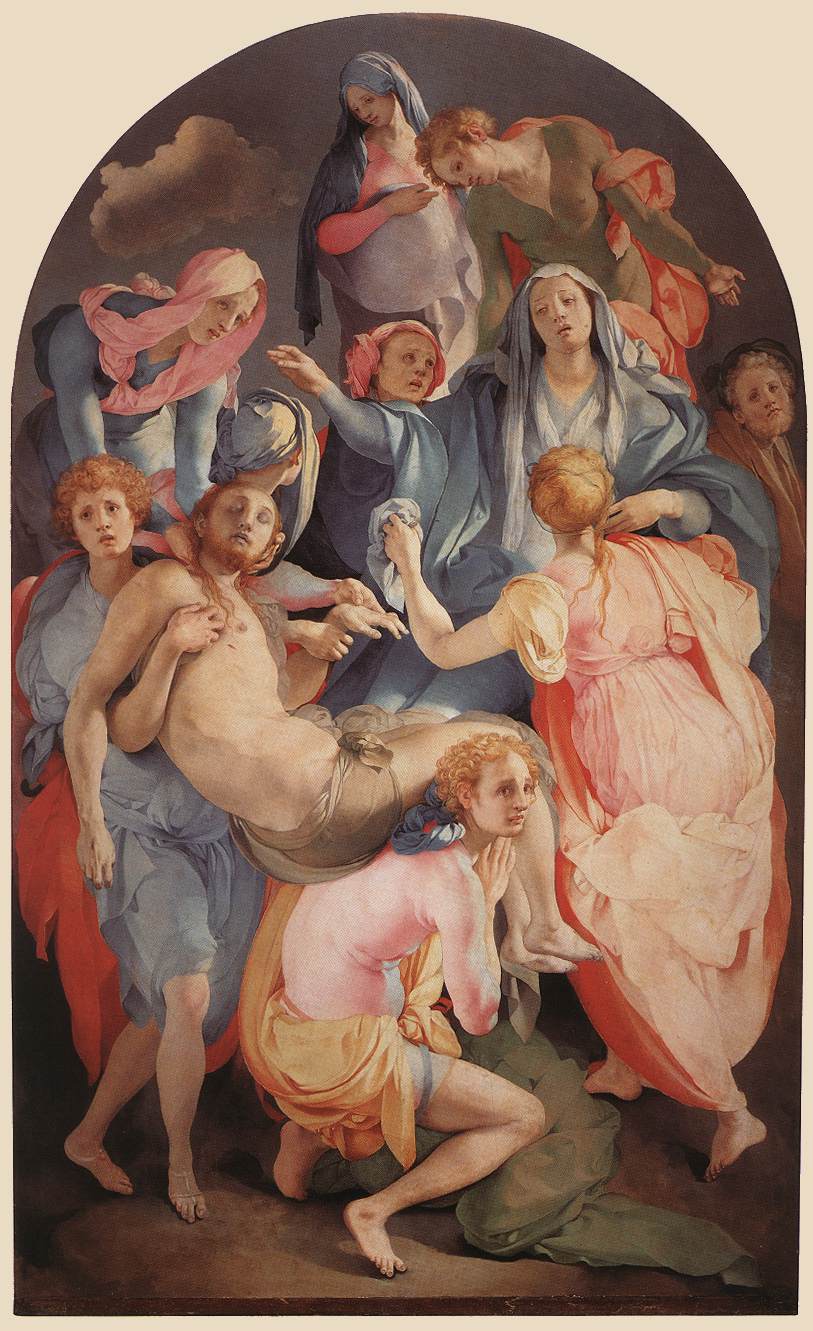
W |
|
Jacopo da Pontormo, Entombment, 1525-28, oil on wood, Florence, Italy-Mannerism style of painting, the void in the middle of the painting symbolizes loss and grief, figure on the right is self portrait of the artist, Virgin mary faces away, dropped christ's hand and is running away. |
| |
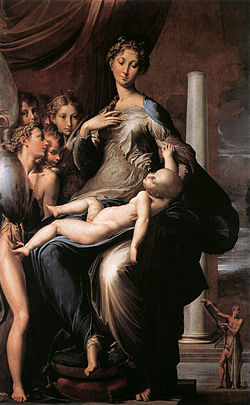
X |
|
Parmigianino, Madonna with the Long Neck, 1534-40, oil on wood-Elegance exhibits principles of Mannerism, neck is compared to ivory tower, power as well as beauty. |
| |

Y |
|
Bronzio, Venus, Cupid, Folly, and Time, c. 1545, oil on wood-Cupid and Venus are fondling, Folly showers them with rose petals, Time reveals the incest. Other figures represent Envy, masks = deceit, love, with envy and inconstancy is foolish. |
| |

Z |
|
Tintoretto, Last Supper, 1594, oil on canvas-Christ during the last supper, bread and wine, angels in the ceiling, |
| |

AA |
|
Veronese, Christ in the House of Levi, 1573, oil on canvas-A richer, fancier, version of the Last Supper |
| |

AB |
|
Albrechet Durer, Fall of Man (Adam and Eve), 1504, engraving-Human proportions, cat=temperamental, elk=melancholy, rabbit=cheerfulness, ox=steadiness |
| |

AC |
|
Albrecht Durer, Four Apostles, 1526, oil on wood-John, Peter, Mark, Paul. Bible is the focus of the men, being authoritative source of religion. |
| |

AD |
|
Hans Holbein the younger, French Ambassadors, 1533, oil and tempera on wood-Anamorphic skull in the painting, collection of objects reflective of their worldliness. |
| |
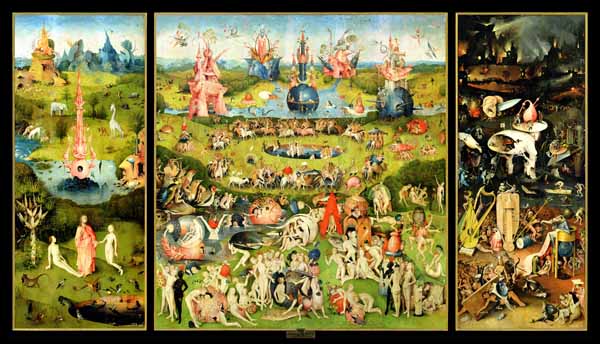
AE |
|
Hieronymus Bosch, Garden of Earthly Delights, 1505-10, oil on wood-Left panel, God presents Eve to Adam in the Garden of Eden, right panel shows the horrors of hell, middle panel, people are coupled off and doing the nasty with weird creatures and fountains and stuff. |
| |

AF |
|
Pieter Bruegel, Netherland Proverbs, 1559, oil on wood-Illustrates more than a hundred proverbs in the painting, Bruegels understanding of human nature is apparent. |
| |

AG |
|
El Greco, Burial of Count Orgaz, 1586, oil on canvas-St. Peter watching down holding keys to heaven, conveys emotion, and religious compassion, represents heaven and Earth, Count of Orgaz |
| |

AH |
|
Bernini, Cornaro Chapel, 1645-52, Rome Italy-Used the art of theatre to produce tension in the interior of the chapel
|
| |

AI |
|
Bernini, plaza of St. Peter's, 1656-67, Vatican
|
| |

AJ |
|
Bernini, David, 1623, marble-David in combat, dynamic action is felt from the sculpture. |
| |

AK |
|
Bernini, Ecstasy fo Saint Teresa, 1645-52, marble, Cornaro Chapel, Rome, Italy--Saint Teresa, stabbed by an arrow from an angel, she felt pleasure. |
| |

AL |
|
Caravaggio, Conversion of Saint Paul, c. 1600, oil on canvas-Shows moment of conversion, lighting is designed to make the spectator feel as if they're witnessing the action. |
| |

AM |
|
Artemesia Gentileschi, Judith Slaying Holofernes, c.1620, oil on cavas- |
| |

AN |
|
Giovanni Battista Gaulli, Triumph in the Name of Jesus, 1676-79, ceiling fresco and stucco, Rome, Italy |
| |

AO |
|
Diego Velazquez, Las Meninas, 1656, oil on canvas |
| |

AP |
|
Jan Vermeer, Allegory of Painting, 1670-75, oil on canvas |
| |
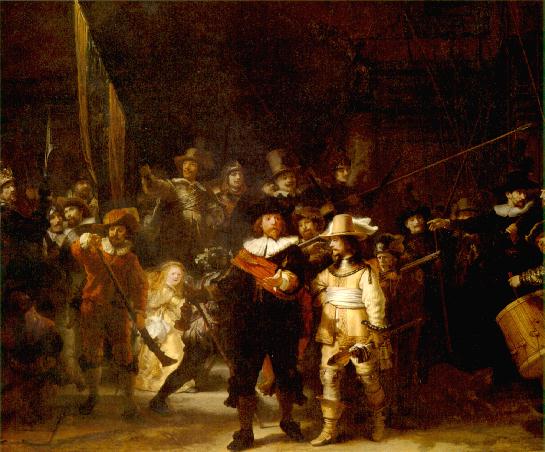
AQ |
|
Rembrandt, THe Company of Captian Frans Banning Cocq, 1642, oil on canvas |
| |

AR |
|
Han Vermeer, The Letter, 1666, oil on canvas |
| |

AS |
|
Hall of Mirrors, c. 1680, Palace of Versailles, France |
| |

AT |
|
Caravaggio, Calling of Saint Matthew, c. 1600, oil on canvas- |
| |
|
